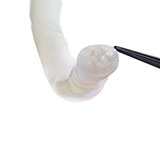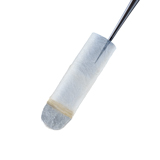autograft harvest procedures
Reconstruction with autograft nerve involves taking a peripheral nerve from somewhere else in the patient’s body and transplanting it at their injury site, which can cause loss of function and pain at the donor site.1 Axogen solutions can be used to reconstruct the donor site to restore function and minimize risk of painful or symptomatic neuroma formation.
In the event a nerve injury necessitates an autograft, there are various harvest sites available. Sural nerve, the most common nerve used for an autograft, has reported harvest site complication rates up to 22.9%. These long-lasting complications include recurrent pain and impacts on daily life.1 If reconstruction is not an option due to no distal target, consideration should be given to capping the proximal nerve end to potentially minimize painful neuroma formation.
remember the following:
- When a nerve is harvested, a significant nerve deficit can be left.2 Avance® has shown a meaningful recovery rate† of 82% across sensory, mixed and motor nerve repairs in gaps up to 70 mm.3 When the nerve deficit is over 70 mm, Axoguard Nerve Cap® can be used to exhaust the proximal nerve end and reduce the potential development of neuroma formation and subsequent pain.
- Reconstructing the nerve harvest site has been shown to significantly reduce postoperative neuropathic pain at 6 months compared to patients who did not receive reconstruction.4
- Reconstructing the nerve harvest site can decrease the risk of decreased patient quality of life.4
more procedures
There’s only a short form between you and our nerve product team who can help you get more information about our nerve repair solutions.
references
†Defined as Medical Research Council Scale of S3/M3 or greater.
- Ducic I, et al. Chronic postoperative complications and donor site morbidity after sural nerve autograft harvest or biopsy. Microsurgery. Sep 2020;40(6):710-716.
- Tada K, et al. Long-Term Outcomes of Donor Site Morbidity After Sural Nerve Graft Harvesting. J Hand Surg Glob Online. 2020;2(2):74-76.
- Safa B, et al. Peripheral nerve repair throughout the body with processed nerve allografts: Results from a large multicenter study. Microsurgery. Jul 2020;40(5):527-537.
- Sakamuri S, et al. Allograft nerve repair reduces postoperative neuropathic pain following nerve biopsy. Neurosurgery. Dec 2020;87(6):E638-E645.

